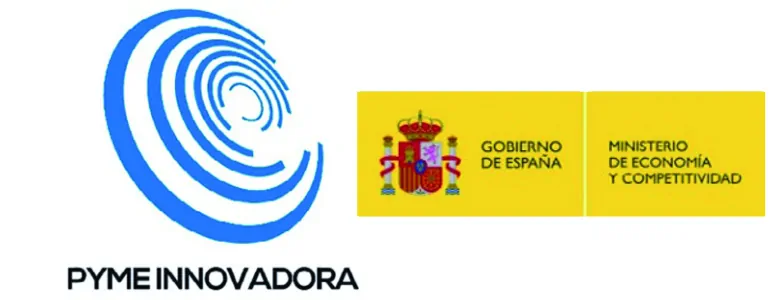
HORIZON EUROPE

 Europeo
Europeo
Expected Outcome:As Li metal anodes will be needed for the Gen 4b, Gen 4c and Gen 5 batteries, it is important to create a European production chain for their manufacturing, in order to guarantee secure supply chains for the next generation battery producers with a focus on high performance and recyclability for Gen 4b, Gen4c or Gen5 cells.
The proposed project is expected to contribute to all the following outcomes:
Reduction of strategic dependencies for critical raw materials by promoting resource efficiency.Energy consumption/carbon footprint of processing 10% lower than SoA.Throughput of Li foil and/or electrode production to support cell manufacturing, including a technical pathway towards production at MWh/(sub-)GWh scale.Ensure stability of Li during handling, processing and operation using coatings or other protective technologies (e.g. barriers/protective layers).Processing of Li (Metal) and Li electrodes within cell assembly at industrial scale, including, but not limited to, high-quality cutting of the Li foil and/or electrode.Homogeneous Li films with thickness below 20µm, contributing towards energy density levels of 400-500 Wh/kg.The deve...
ver más
Expected Outcome:As Li metal anodes will be needed for the Gen 4b, Gen 4c and Gen 5 batteries, it is important to create a European production chain for their manufacturing, in order to guarantee secure supply chains for the next generation battery producers with a focus on high performance and recyclability for Gen 4b, Gen4c or Gen5 cells.
The proposed project is expected to contribute to all the following outcomes:
Reduction of strategic dependencies for critical raw materials by promoting resource efficiency.Energy consumption/carbon footprint of processing 10% lower than SoA.Throughput of Li foil and/or electrode production to support cell manufacturing, including a technical pathway towards production at MWh/(sub-)GWh scale.Ensure stability of Li during handling, processing and operation using coatings or other protective technologies (e.g. barriers/protective layers).Processing of Li (Metal) and Li electrodes within cell assembly at industrial scale, including, but not limited to, high-quality cutting of the Li foil and/or electrode.Homogeneous Li films with thickness below 20µm, contributing towards energy density levels of 400-500 Wh/kg.The developed process should be compatible with recycling targets (with respect to purification of scrap with protective coating) and assure recyclability to more than 70% of Li metal in battery waste, (90% Li metal for production scrap).The proposed project is encouraged to contribute to a competitive price of 75€/kWh at pack level. A demonstration of the performance of Li at cell level in SoA benchmark cell (at least TRL5 with at least 1 Ah capacity). Validation in Generation 4b, 4c and/or Generation 5 cells is highly encouraged.
Scope:Proposals under this topic are expected to cover all of the following bullet points:
Sustainable, cost-efficient and large-scale production of Li-metal foils and/ or electrodes, demonstrated up to pilot level during the project. Activities can include, but are not limited to, extrusion, comparison extrusion / electrostatic spray, rolling and co-rolling. However, extensive cell design and development are out of the scope as this topic focuses on the Li anode production.Control of the passivation of Li metal films, and to understand how the passivation is linked with the dry room conditions and requirements. The goal is to find the optimal way: high passivation and lower quality dry room, or low passivation and higher quality dry room, and how these selections are linked with cost, energy consumption and performance of the cells. The project is expected to also guarantee safety of the Li film production and handling, which has to be demonstrated in a process that is compatible for large scale production.
Plans for the exploitation and dissemination of results for proposals submitted under this topic should include a strong business case and sound exploitation strategy, as outlined in the introduction to this Destination. The exploitation plans should include preliminary plans for scalability, commercialisation, and deployment (feasibility study, business plan).
Collaboration with other projects from calls HORIZON-CL5-2023-02-01 Advanced materials and cells development enabling large-scale production of Gen4 solid-state batteries for mobility applications and/or HORIZON-CL5-2024-02-02 Post-Li-ion technologies and relevant manufacturing techniques for mobility applications (Generation 5) is expected.
The project is encouraged to cooperate with projects stemming from call topic HORIZON-CL5-2023-01-01 Technologies for sustainable, low carbon and cost-efficient downstream processing and production of battery-grade materials.
This topic implements the co-programmed European Partnership on Batteries (Batt4EU). As such, projects resulting from this topic will be expected to report on the results to the European Partnership on Batteries (Batt4EU) in support of the monitoring of its KPIs.
ver menos
Características del consorcio
 :
La ayuda es de ámbito europeo, puede aplicar a esta linea cualquier empresa que forme parte de la Comunidad Europea.
:
La ayuda es de ámbito europeo, puede aplicar a esta linea cualquier empresa que forme parte de la Comunidad Europea.
Características del Proyecto
2. **Energy efficiency**: Target to lower energy consumption and carbon footprint during processing by at least 10% compared to the State of the Art (SoA) levels.
3. **Throughput improvement**: Increase Li foil and electrode production throughput to support cell manufacturing at Megawatt/Sub-Gigawatt scale.
4. **Stability enhancement**: Implement coatings and protective technologies to ensure stability of Li metal during handling, processing, and operation.
5. **Recyclability**: Achieve high recyclability targets for Li metal in battery waste and production scrap to exceed 70% recyclability.
6. **Cost competitiveness**: Aim to contribute to a competitive price of 75€/kWh at the pack level for Li-metal batteries.
7. **Demonstration of performance**: Demonstrate Li-metal performance in benchmark cells and validate in Generation 4b, 4c, or Generation 5 cells for enhanced practical implications.
Gastos relacionados con el personal que trabaja directamente en el proyecto basado en las horas efectivas dedicadas, basado en el coste empresa y ratios fijos para determinados empleados como los dueños de la compañía.
Pagos a terceros externos para realizar tareas específicas que no pueden ser realizadas por los beneficiarios del proyecto.
Incluyen la adquisición de equipos, amortizaciones, material, licencias u otros bienes y servicios necesarios para la ejecución del proyecto
Gastos diversos como costes financieros, certificados de auditoría o participación en eventos no cubiertos por otras categorías
Gastos generales no asignables directamente al proyecto (como electricidad, alquiler u oficina), calculados como un 25% fijo sobre los costes directos elegibles (excepto subcontratación).
Características de la financiación
Para el presupuesto subvencionable la intensidad de la ayuda en formato fondo perdido podrá alcanzar desde un 70% hasta un 100%.
Información adicional de la convocatoria

Otras ventajas
Ayudas Similares

| Próximamente

| Próximamente

| Próximamente

